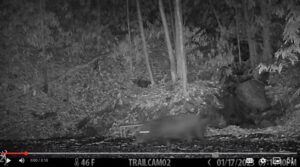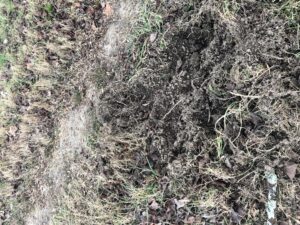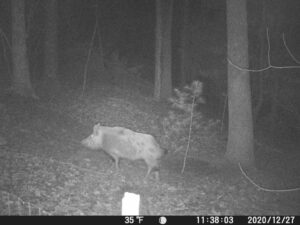Pest Alert – Wild Hogs
go.ncsu.edu/readext?922972
en Español / em Português
El inglés es el idioma de control de esta página. En la medida en que haya algún conflicto entre la traducción al inglés y la traducción, el inglés prevalece.
Al hacer clic en el enlace de traducción se activa un servicio de traducción gratuito para convertir la página al español. Al igual que con cualquier traducción por Internet, la conversión no es sensible al contexto y puede que no traduzca el texto en su significado original. NC State Extension no garantiza la exactitud del texto traducido. Por favor, tenga en cuenta que algunas aplicaciones y/o servicios pueden no funcionar como se espera cuando se traducen.
Português
Inglês é o idioma de controle desta página. Na medida que haja algum conflito entre o texto original em Inglês e a tradução, o Inglês prevalece.
Ao clicar no link de tradução, um serviço gratuito de tradução será ativado para converter a página para o Português. Como em qualquer tradução pela internet, a conversão não é sensivel ao contexto e pode não ocorrer a tradução para o significado orginal. O serviço de Extensão da Carolina do Norte (NC State Extension) não garante a exatidão do texto traduzido. Por favor, observe que algumas funções ou serviços podem não funcionar como esperado após a tradução.
English
English is the controlling language of this page. To the extent there is any conflict between the English text and the translation, English controls.
Clicking on the translation link activates a free translation service to convert the page to Spanish. As with any Internet translation, the conversion is not context-sensitive and may not translate the text to its original meaning. NC State Extension does not guarantee the accuracy of the translated text. Please note that some applications and/or services may not function as expected when translated.
Collapse ▲Hawg Wild
Do we have wild hogs in Henderson County? Apparently so! I have received several images via email taken from game cameras in the county since 2020. I have visited areas of suspected hog damage as well.

Wild hogs are being spotted in Henderson County. This one was photographed at the end of 2022 near Dupont Forest and Holmes State Forest.
The Feral Swine Problem
Feral hogs can be found in almost every county in North Carolina. Feral swine can carry diseases that can be potentially hazardous to livestock operations. Feral swine feeding and rooting in forests and meadows is highly destructive to native wildlife and plant ecosystems. Their damage is estimated at $1.5 billion annually in the U.S.
In Henderson County the feral swine problem is just starting. The population of feral swine is relatively low right now. However this could change rapidly.
History
Wild pigs are not native to the Americas. Also known as feral swine, the animal is an Old World species. The first wild pigs in the United States originated in the 1500’s to what is now the southeastern U.S. by Spanish explorer, Hernando DeSoto.
Later, livestock swine were brought to North America by European settlers. Many years later, Eurasian wild boar were introduced for hunting. Eurasian wild boar and escaped domestic livestock pigs found each other in the wild and interbreeding occurred.

Feral swine root up pastures and forests causing tremendous damage to agriculture and the environment. This damage occurs in the Saluda area annually and has been ongoing for several years.
What To Do
If you have wild hogs on your property causing damage, you can either trap or kill the animals. See the NC Wildlife Resources Commission for hunting regulations. Currently, feral swine are classified as non-game animals, with no closed hunting season on private lands and no bag limits. All persons hunting feral swine at any time must have a valid hunting license or must be exempt from having a license.





